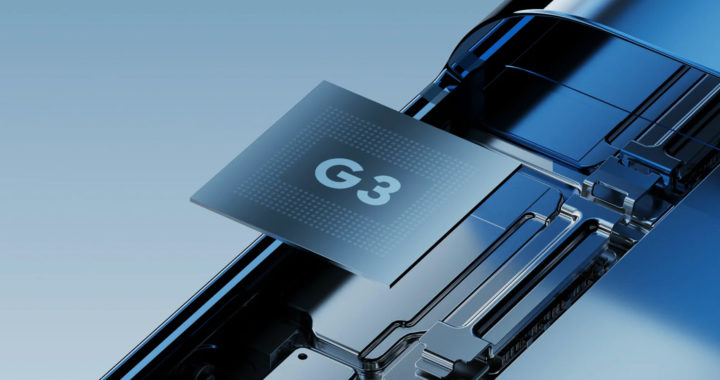The Google Tensor G3 is a third-generation mobile system-on-a-chip under the Google Tensor line that was designed by Google and manufactured by Samsung. It is the successor to the Google Tensor G2 that was used in the seventh-generation Google Pixel smartphones which include the Pixel 7A. This 64-bit chip is based on the ARM architecture and it powers the Google Pixel 8 and Google Pixel 8 Pro Android smartphones that were launched on 4 October 2023. Nevertheless, considering its positioning, it competes with other flagship mobile chips from Qualcomm, MediaTek, and Apple that were launched in late 2022 and 2023. This article reviews the advantages and disadvantages or pros and cons of the Google Tensor G3.
Review: Highlighting the Pros and Cons of Google Tensor G3
1. Fundamental Technologies, Architecture, and Specifications
This chip is based on the 4nm process of Samsung. This is a slight upgrade to the 5nm process used in the manufacturing of the Google Tensor G2 and it features a more dense transistor count for better performance and improved power efficiency.
At the heart of the Google Tensor G3 is a nine-core CPU based on the big.LITTLE heterogeneous computing architecture of ARM. It is specifically composed of one high-performance Cortex-X3 core clocked at 3.0 GHz frequency, four average-performance Cortex-A715 clocked at 2.45 GHz, and four efficiency Cortex-A510 core clocked at 2.15 GHz frequency.
The integrated GPU is an Immortalis G715s MC10. This is a toned-down version of the flagship Immortalis G715 graphics processor from ARM. It is still a capable hardware but it does not offer advanced graphics rendering such as hardware-based ray tracing.
Included in the chip is an LPDDR5X RAM, a custom Google Tensor Processing Unit for accelerating artificial intelligence or machine learning workloads, the newer generations Wi-Fi 7 and Bluetooth 5.3, and an updated Samsung Exynos 5300i modem equipped with mmWave 5G and sub-6 GHz 5G, and 4G and LTE cellular network technologies
2. Notable Performance Improvements From Google Tensor G2
There is a notable improvement from the Google Tensor G1 and the Tensor G2 to the Google Tensor G3 in terms of processing capabilities and overall performance. This newer custom mobile chip has more cores than the previous generations. It is also about 21 percent faster than its predecessor with higher clock speeds on performance and efficiency cores.
Results from synthetic benchmark tests have shown that the Tensor G3 is about 19 percent better in single-core and multi-core processing workloads. Specific results from OpenCL and Vulkan further showed that it is 41 percent in terms of graphics processing.
The third-generation Google Tensor Processing Unit and newer image signal processor and imaging digital signal processor have made this chip twice as capable as the first-generation Tensor G1 when it comes to running machine learning models.
Google noted that it designed this chip with artificial intelligence acceleration in mind instead of traditional speed-centric metrics. It powers the various generative AI features of the Pixel 8 and 8 Pro and it is more efficient at running the foundation models of Google used for computational photography and various natural language processing applications.
3. Performance Comparison With Other Flagship Mobile Chips
This chip is flagship-level and it competes against similar chips launched in late 2022 and 2023. These specifically include the Qualcomm Snapdragon 8 Gen 2, the MediaTek Dimensity 9000, and MediaTek Dimensity 9200, and the Apple A17 Pro.
However, when compared with its counterparts, a notable drawback of the Google Tensor G3 is that its processing capabilities are underwhelming. The Snapdragon 8 Gen 2 is about 22 percent better in single-core and multi-core processing workloads and about 12 percent better in graphics processing and gaming performance based on benchmark results.
The Appl 17 Pro used in the iPhone 15 Pro and 15 Pro Max is the fastest among all flagship-level mobile systems-on-chips for 2023. It outcompetes even the high-tier Qualcomm Snapdragon 8 Gen 2 and MediaTek Dimensity 9200 used in flagship Android devices.
Nevertheless, in terms of raw performance, the closest competitors of the Tensor G3 are the older Snapdragon 8 Gen 1 and Samsung Exynos 2200. Results from synthetic and real-world tests have shown that there is little to negligible performance difference among the three chips in terms of central processing or general compute and graphics processing.
Verdict: A Review of the Pros and Cons of Google Tensor G3
The aforementioned technological and architectural foundations, technical specifications, and pros and cons of the Google Tensor G3 put it in the flagship category of mobile chips. It might not be as powerful as its counterparts in terms of raw performance but it is also important to note that it demonstrates significant improvements from the previous Tensor chips.
At the heart of the capabilities of this chip is its focus on enabling AI in smartphones. The generative AI features of the Pixel 8 and Pixel 8 Pro are part of their value propositions. These devices have smart photography features, powerful photo editing capabilities, and extensive NLP applications such as live language translation and accurate voice recognition.
Nevertheless, although the main disadvantage or one of the cons of the Google Tensor G3 is its processing shortcoming, it is still important to highlight the fact that this chip provides enough power to run the most recent apps and games with minimal issues. It is still worth noting that this chip would struggle to run mobile games at maximum graphics settings.
